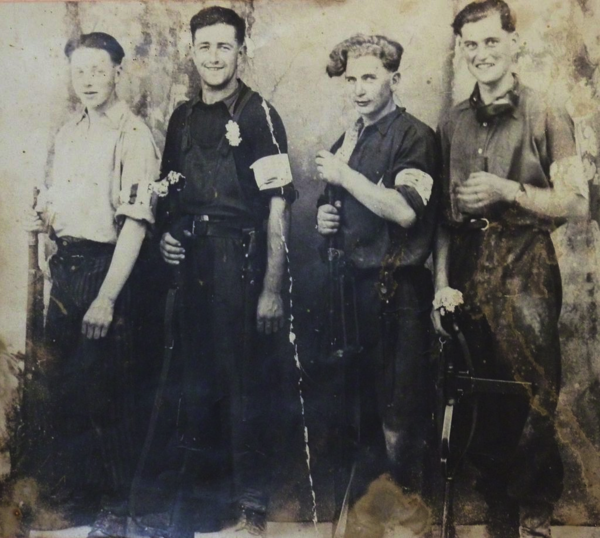Resistance Movements
Over the course of World War Two, resistance movements sprung up in all Nazi Germany occupied territories. Resistance movements operated clandestinely behind Nazi lines. They gathered intelligence on behalf of the Allies, got rid of communication lines, helped POW's who had escaped and, once the Germans started retreating on the Eastern and Western fronts, openly attacked the Germans. The work of resistance movements was of vital importance to the Allies and the Russians, but it was highly dangerous too. Members of resistance movements faced death if they were discovered by Nazi forces.
From 1939 until summer 1941, resistance movements in Europe found it difficult to make an impact against Nazi Germany’s formidable war machine. From 1939-1941, Nazi Germany inflicted horrific Blitzkrieg attacks against Poland, Norway, Western Europe and Russia. These countries had little time to prepare organised secret armies to weaken the invaders. German commander reports to the headquarters of the German Army (OKW), show the movements were nothing more than a minor irritant. Local populations were savagely repressed; this repression would probably have dissuaded many people from joining local resistance forces.

Resistance groups became more effective during Operation Barbarossa, Nazi Germany’s attack on Soviet Russia in June 1941. At this point in the war, European Communist groups had been relatively inactive in resistance movements. This all changed during Germany's attack against Russia.
“Right from the start, communist resistance achieved a remarkable cohesion and efficiency because they had long been used to working underground.” Jean-Léon Charles
Western Europe had many resistance fighters join the Communist resistance movement because it appeared to be the one with most success. However, this could be detrimental to the fight against Germany. In France, internecine rivalries emerged between the ‘normal’ French resistance and the French Communist Resistance. There were also clashes between the different Resistance movement wings in Poland, Yugoslavia, Greece and Romania.
Britain’s Special Operations Executive (SOE) started to realise at the end of 1941 that the Resistance movement would be more potent if Occupied Europe’s secret armies were organised into a coherent mass, instead of several disparate blocks. This idea was not completely realised, but by the end of the war remarkable progress had been made through better organised Resistance movements and better planned Resistance operations.
See also: Special Operations Executive
MLA Citation/Reference
"Resistance Movements". HistoryLearning.com. 2026. Web.
